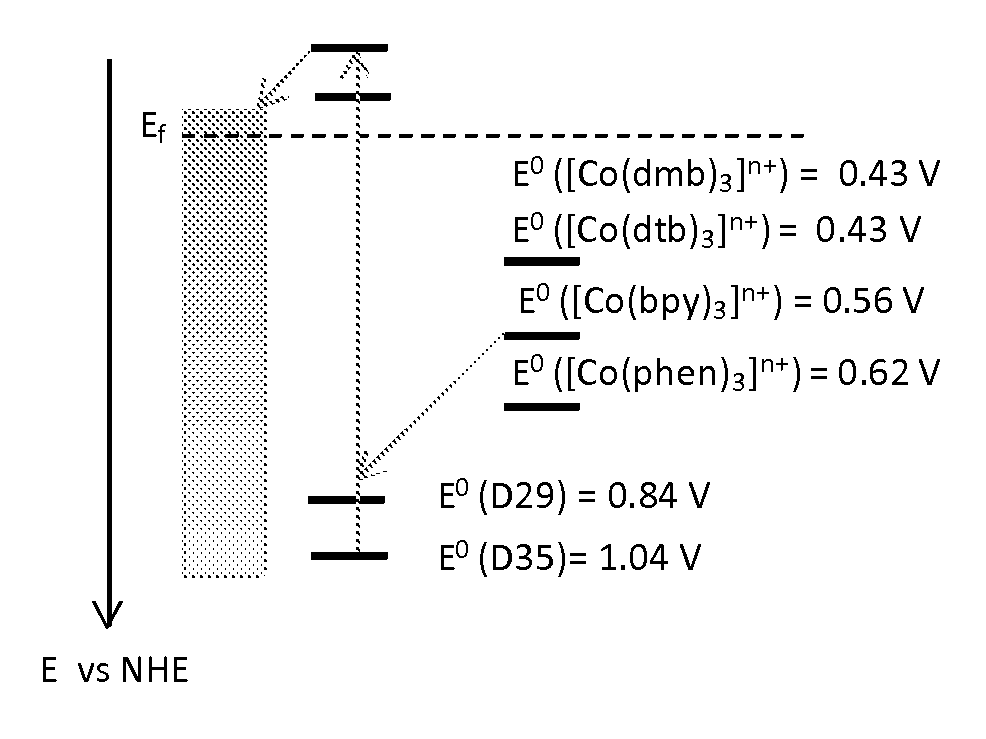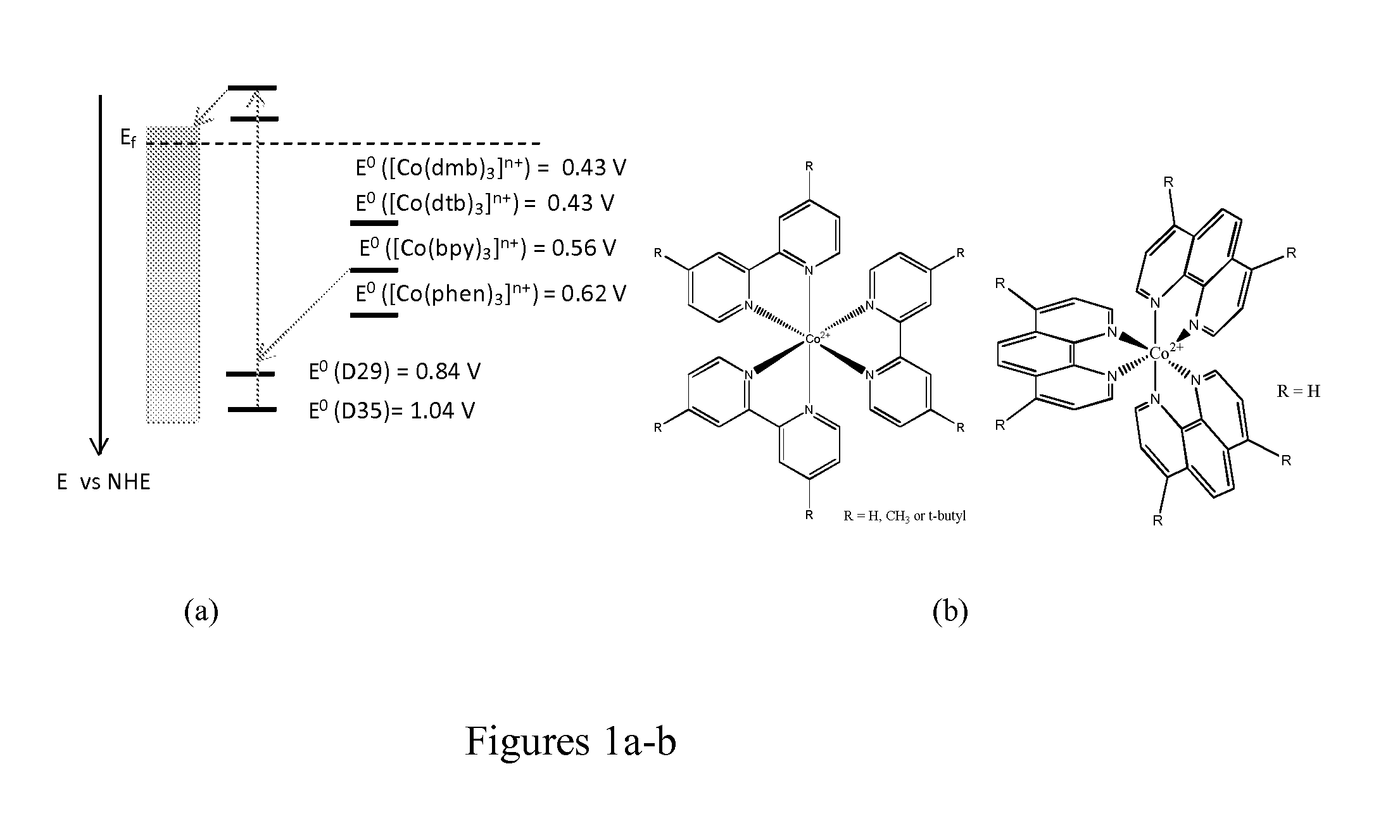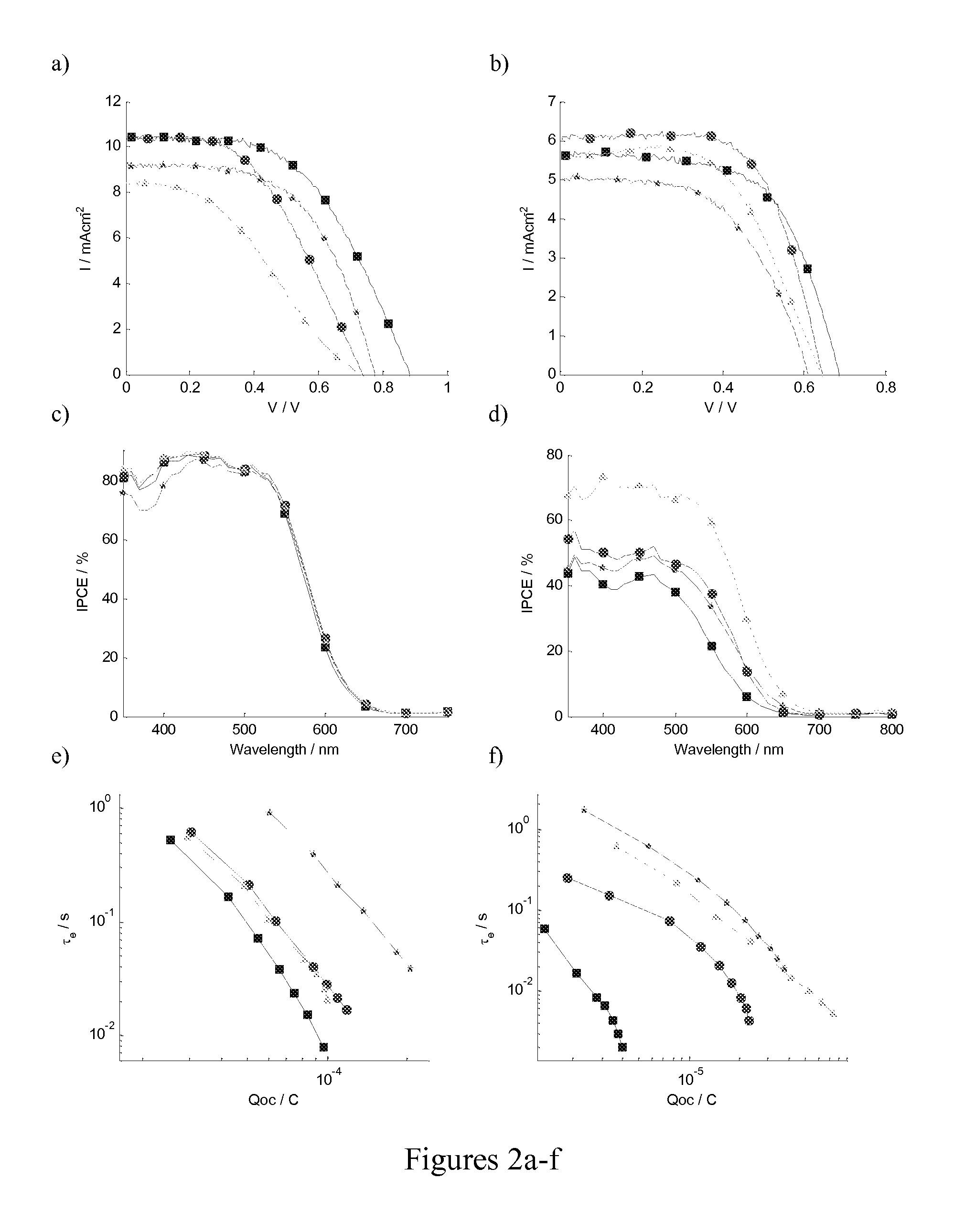High efficiency dye-sensitized solar cells
- Summary
- Abstract
- Description
- Claims
- Application Information
AI Technical Summary
Benefits of technology
Problems solved by technology
Method used
Image
Examples
examples
[0068]All chemicals were purchased from Sigma Aldrich unless otherwise noted.
[0069]Syntheses of cobalt complexes. The cobalt complexes [Co(bpy)3(PF6)2]2+, [Co(dmb)3(PF6)2]2+, [Co(dtb)3(PF6)2]2+ and [Co(phen)3(PF6)2]2+ were synthesized as described elsewhere (see Sapp, S. A.; Elliott, C. M.; Contado, C.; Caramori, S.; Bignozzi, C. A. J. Am. Chem. Soc. 2002, 124, 11215; Klahr, B. M.; Hamann, T. W. J. Phys. Chem. C 2009, 113, 14040). Briefly, 1 equiv of CoCl2. 6H2O and 3.3 equiv of the polypyridine ligand were dissolved in a minimal amount of methanol (Merck) and the solution was stirred at reflux for 2 h. An excess of ammonium hexafluorophosphate was then added to the solution to precipitate the compound that was filtered, washed with methanol and ethanol, dried under vaccum and used without further purification.
Oxidation of the cobalt complexes was performed by adding a slight excess of NOBF4 to an acetonitrile solution of the cobalt complex and then by removing t...
PUM
 Login to View More
Login to View More Abstract
Description
Claims
Application Information
 Login to View More
Login to View More - R&D
- Intellectual Property
- Life Sciences
- Materials
- Tech Scout
- Unparalleled Data Quality
- Higher Quality Content
- 60% Fewer Hallucinations
Browse by: Latest US Patents, China's latest patents, Technical Efficacy Thesaurus, Application Domain, Technology Topic, Popular Technical Reports.
© 2025 PatSnap. All rights reserved.Legal|Privacy policy|Modern Slavery Act Transparency Statement|Sitemap|About US| Contact US: help@patsnap.com



